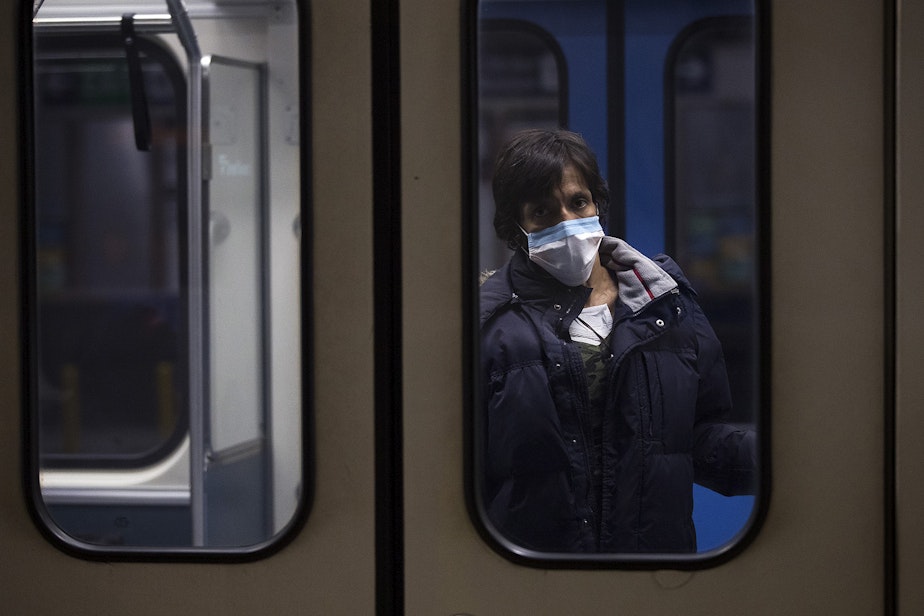Worried about the air in your packed light rail car? Don't, Sound Transit says

Traffic in Washington is once again about as bad as it was before Covid-19 kept many people off the roads and at home.
Washington State Department of Transportation data shows traffic at 32 locations statewide hovering about 3% below the March 2019 to February 2020 baseline in recent weeks.
Transit use has rebounded somewhat after plummeting nearly 90% last year, but it remains at roughly half pre-pandemic levels, according to Sound Transit and King County Metro.
Sound Transit hopes its new light rail service to North Seattle will boost ridership.
The agency says if you're worried about safety in a crowded rail car during a pandemic, you shouldn't be. Spokesperson John Gallagher says Sound Transit's light rail cars have some of the safest, best ventilated indoor air around, with air circulating at 12 ACH (air changes per hour). That means their air is replaced every five minutes.
"That rate of exchange is comparable to what you would find in an operating room," Gallagher said. "And it's also far higher than you would find in your typical office building or school."
Sponsored
"That is a very good rate of ventilation, comparable to hospital operating rooms/isolation wards and commercial airliners in flight," Richard Corsi, dean of engineering at University of California, Davis, said in an email.
Corsi said many schools and offices have air circulating at just two or three air changes per hour, a rate aerosols researchers recommend at least doubling to improve coronavirus safety.
Good ventilation is one of the most important measures to prevent the spread of coronavirus indoors.
Masks are also still required on all transit vehicles, just like on airplanes.
Gallagher said, in addition to frequent ventilation, Sound Transit light rail cars have filtration systems fine enough to remove contagious virus particles suspended in the air.

